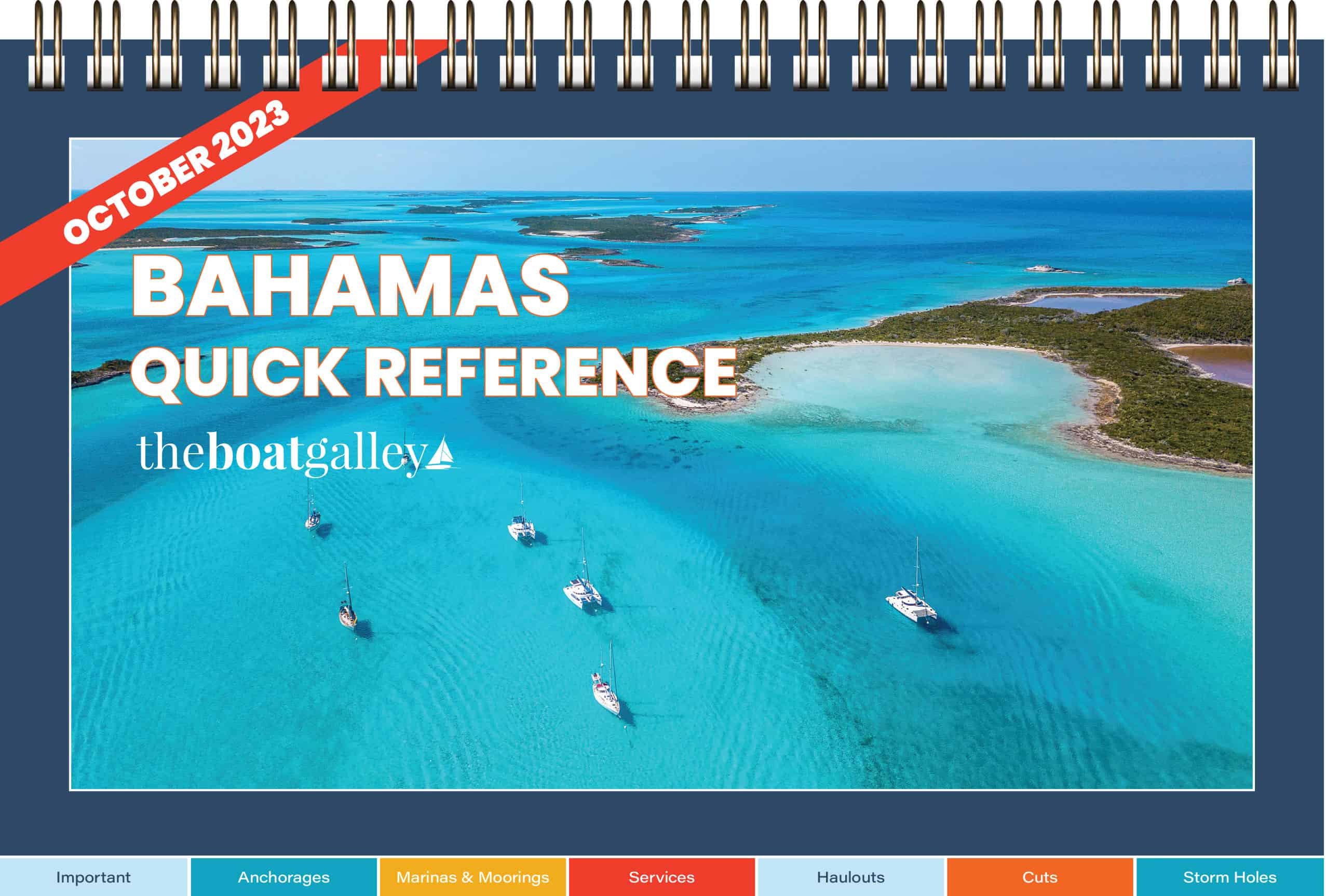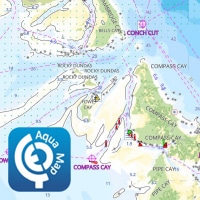What does a potential dinghy disaster look like?
Well, we nearly had a tragedy recently here in Boot Key Harbor. A guy near us fell out of his dinghy while it was running, and in falling out, turned the throttle to wide open. The dinghy spun in circles at full throttle.
He was lucky. He was right next to his own boat and was able to dive under it so that the dinghy prop didn’t hit him.
Dinghy Disaster Stories
Over the years, I’ve heard so many dinghy disaster stories. I know of one incident in the Bahamas about ten years ago where one boater was killed after falling out of his circling dinghy. And a rescuer was seriously injured. I’ve heard of very serious injuries, including a leg amputation, and numerous near-misses. In another case, the dinghy went straight and the driver was left over a half mile offshore . . . a long swim not to mention needing to replace the dinghy.
Dinghy Safety
So let’s talk a bit about dinghy safety. And the safety gear that will help you avoid a dinghy disaster.
Kill Cord
There is a simple way to avoid the problem of being hit by a runaway dinghy: wear the kill cord! If you fall overboard, it will pull a clip on the motor and it will stop instantly.
You can wear the clip numerous ways:
- Put it around your wrist or ankle. If it’s loose enough that it could slip off in an emergency, attach it to a Velcro strap and put that around your wrist or ankle.
- Clip it onto a belt loop or other piece of clothing.
- Clip it onto your PFD if you’re wearing one.
Dinghy Lights
After dark, you simply MUST have at least an all-around light on your dinghy. I’m not talking about legal requirements (which vary by where you are), I’m talking about simple common sense.
Night after night, sitting in our cockpit, we hear outboards going by our boat – but cannot see the dinghies they’re attached to. Someone in another dinghy wouldn’t hear the outboard over their own.
And more than once, we’ve gotten within 10 feet of an unlit dinghy when driving our own after dark. Remember – if you have a low light and are sitting in front of it, you’re blocking that light from being seen and it’s the same thing as if you didn’t have a light on at all.
Several years ago, a friend of ours, with no light other than a headlamp, was run over by a high-speed boat in the USVI. She was seriously injured and might not have survived had it not been for a crew member who was able to keep her head above water until help arrived.
My favorite dinghy light, which we got just a few months ago, is the Mantus Dinghy Nav Light, which is solar powered and meets USCG requirements. It’s not cheap, but Mantus is having a 20% off sale through tomorrow with coupon code ES2023MM (Full disclosure: Mantus is a sponsor of TBG and I earn a bit on sales through this link but I recommend this light as being the best we’ve ever used . . . and I paid for it.)
A Luci Light (Amazon) or even a solar garden light (Amazon) is better than nothing. When all else fails, turn your phone’s flashlight on and keep turning it in a circle. But do something so that other boats can see you!
Basic Knowledge
If you’re not familiar with outboard motors, a quick reference for what to do if yours stops or won’t start is crucial.
That’s exactly why I created our Outboard Troubleshooting Guide for Non-Mechanics several years ago. I’d say that over 80% of problems with outboards don’t require a mechanic or even taking the cover off the motor.
While these things seem simple to someone with years of operating an outboard, they’re not obvious to someone new. Grab a copy and leave it in the dinghy – it’s printed on material that is water-, sunscreen- and fuel-proof.
A Way To Get In The Dinghy From The Water
Don’t just assume you can pull yourself in if you go snorkeling or fall in. It takes more upper-body strength than you think, and some dinghies (particularly hard dinghies) can be very tippy.
Try your setup in a safe place before you really need it! And if you’re going to use a ladder of some type, make sure you can launch it from the water. If you go overboard accidentally when alone in the dinghy, you have to be able to get back in by yourself.
Other Items To Keep In The Dinghy
- Oars (it’s often easier to use oars as paddles depending on your dinghy)
- Anchor and plenty of rode. Don’t get swept out to sea if there’s a problem with the motor. We love our easily stowed Mantus dinghy anchor and rode.
- Water
- PFDs and a throwable
- Duct tape for patch or temporary bandage for a cut
- Handheld VHF; possibly cell phone in waterproof case. I like the Ugo waterproof case – it saved my phone when I fell in once. Use coupon code SAVE20BG for 20% off.
Bottom Line to Avoid Dinghy Disaster
We all worry about life rafts, ditch bags, emergency pumps, and so on. Basically, thinking about things that can go wrong with our “big boat.” The reality is that I know of far more people that have had major injuries or near misses in the dinghy.
Wear the kill cord. Get a light and use it at night. Have oars and an anchor ready to drop. Carry communications gear. Be able to get into the dinghy from the water.

Quickly find anchorages, services, bridges, and more with our topic-focused, easy-to-use waterproof guides. Covering the ICW, Bahamas, Florida, and Chesapeake.
Explore All Guides

Carolyn Shearlock has lived aboard full-time for 17 years, splitting her time between a Tayana 37 monohull and a Gemini 105 catamaran. She’s cruised over 14,000 miles, from Pacific Mexico and Central America to Florida and the Bahamas, gaining firsthand experience with the joys and challenges of life on the water.
Through The Boat Galley, Carolyn has helped thousands of people explore, prepare for, and enjoy life afloat. She shares her expertise as an instructor at Cruisers University, in leading boating publications, and through her bestselling book, The Boat Galley Cookbook. She is passionate about helping others embark on their liveaboard journey—making life on the water simpler, safer, and more enjoyable.











Leave a Reply